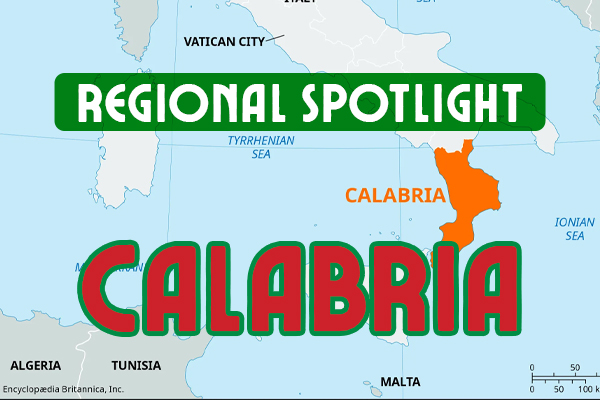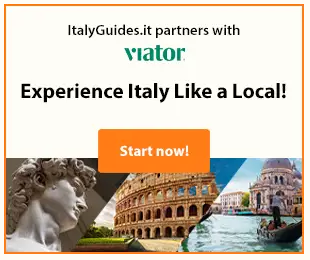 Calabria, located in the southernmost part of Italy, is a region that captivates visitors with its dramatic landscapes, historical depth, and vibrant cultural traditions. Known for its pristine beaches, rugged mountains, and mouthwatering cuisine, Calabria offers a unique and authentic Italian experience. Let’s explore the various aspects that make Calabria a must-visit destination.
Calabria, located in the southernmost part of Italy, is a region that captivates visitors with its dramatic landscapes, historical depth, and vibrant cultural traditions. Known for its pristine beaches, rugged mountains, and mouthwatering cuisine, Calabria offers a unique and authentic Italian experience. Let’s explore the various aspects that make Calabria a must-visit destination.
Location and Climate
Calabria is situated in the southwestern corner of Italy, bordered by the Tyrrhenian Sea to the west, the Ionian Sea to the east, and the regions of Basilicata and Sicily to the north and southwest, respectively. The region’s landscape is characterized by its mountainous terrain, with the Apennine Mountains running through it, and a long coastline that stretches over 780 kilometers.
The climate in Calabria varies depending on the area. Coastal regions enjoy a Mediterranean climate with hot, dry summers and mild, wet winters. The mountainous areas have a more temperate climate, with cooler temperatures and occasional snowfall in the winter. This diverse climate supports a rich variety of flora and fauna and offers favorable conditions for agriculture.
Historical Tapestry
Calabria’s history is as rich and varied as its landscape, influenced by numerous cultures and civilizations over millennia. Key historical periods include:
Ancient Greeks and Romans: Calabria was part of Magna Graecia, a region colonized by the ancient Greeks. Cities such as Reggio Calabria and Locri were important centers of Greek culture. The Romans later took control, leaving behind a legacy of roads, aqueducts, and ruins.
Byzantine and Norman Rule: During the early Middle Ages, Calabria was part of the Byzantine Empire, which left a significant cultural and architectural impact. The Normans later conquered the region, further shaping its historical and cultural landscape.
Medieval and Renaissance Periods: Calabria experienced various feudal dominations, including the Angevins and Aragonese, contributing to the region’s diverse architectural styles and historical sites.
Modern Era: Calabria became part of the Kingdom of Italy in the 19th century. Today, it is known for its agricultural productivity, cultural heritage, and stunning natural beauty.
Key Cities
Reggio Calabria: The largest city in Calabria, Reggio Calabria is known for its beautiful seafront promenade, the Lungomare Falcomatà, and its rich archaeological heritage. Key attractions include the National Archaeological Museum of Magna Graecia, which houses the famous Riace Bronzes, and the Aragonese Castle.
Catanzaro: The regional capital, Catanzaro, is known for its historic center, beautiful parks, and panoramic views. Highlights include the Catanzaro Cathedral, the Norman-Swabian Castle, and the Park of Biodiversity.
Cosenza: Often referred to as the “Athens of Calabria,” Cosenza is renowned for its cultural and intellectual history. Key sites include the Cosenza Cathedral, the Rendano Theatre, and the picturesque old town.
Tropea: Famous for its stunning beaches and dramatic cliffs, Tropea is a popular tourist destination. The town’s historic center features charming streets, ancient churches, and beautiful views of the Tyrrhenian Sea.
Locri: An important archaeological site, Locri offers a glimpse into Calabria’s ancient Greek past. The ruins of the ancient city, including the Temple of Marasà and the National Archaeological Museum, are must-see attractions.
Culinary Delights
Calabrian cuisine is celebrated for its bold flavors, simplicity, and use of fresh, locally sourced ingredients. The region is known for its spicy dishes, preserved meats, and robust wines. Key culinary highlights include:
Nduja: A spicy, spreadable pork sausage made with chili peppers, nduja is a Calabrian specialty enjoyed on bread, in pasta dishes, or as a pizza topping.
Soppressata: A traditional dry-cured salami made from pork, soppressata is seasoned with spices and aged to develop its rich flavor.
Cipolla Rossa di Tropea: Sweet red onions from Tropea are a regional delicacy, often used in salads, jams, and as a topping for various dishes.
Fileja: A traditional Calabrian pasta, fileja is typically served with a rich tomato sauce, often featuring local ingredients like ‘nduja or eggplant.
Lagane e Ceci: A rustic pasta and chickpea dish that reflects Calabria’s simple and hearty culinary traditions.
Click here to browse Recipes from the Calabria Region
Agricultural Highlights
Agriculture plays a central role in Calabria’s economy, with the region producing a variety of high-quality products. Key agricultural highlights include:
Citrus Fruits: Calabria is famous for its citrus fruits, particularly oranges, lemons, and bergamot. The region’s fertile soil and favorable climate contribute to the exceptional quality of these fruits.
Olive Oil: The region produces excellent extra virgin olive oil, characterized by its robust flavor and high quality, used extensively in local cuisine.
Wine: Calabria boasts a rich winemaking tradition, producing notable wines such as Cirò, Greco di Bianco, and Gaglioppo. The region’s vineyards benefit from the ideal climate and terrain.
Vegetables and Legumes: Calabria’s fertile plains are ideal for growing a variety of vegetables and legumes, which are staples in the local diet.
Tourism and Major Attractions
Tourism in Calabria is diverse, with visitors drawn to its historical sites, natural beauty, and cultural events. Major attractions and activities include:
Scilla: A picturesque fishing village located on the Tyrrhenian coast, Scilla is famous for its stunning beaches, the Ruffo Castle, and the charming Chianalea district.
Aspromonte National Park: This national park offers a range of outdoor activities, including hiking, wildlife watching, and exploring the beautiful Aspromonte Mountains. The park is home to diverse flora and fauna and stunning landscapes.
Sila National Park: Known for its pristine forests, lakes, and mountains, Sila National Park is a haven for nature lovers. Popular activities include hiking, cycling, and winter sports.
Gerace: This medieval hilltop town is renowned for its well-preserved architecture, including the Norman Cathedral and numerous historic churches. The town offers stunning views of the surrounding countryside.
Capo Vaticano: A coastal area known for its crystal-clear waters, white sandy beaches, and dramatic cliffs, Capo Vaticano is a popular destination for swimming, snorkeling, and enjoying the natural beauty.
Things to See and Do
Whether you’re interested in history, nature, or gastronomy, Calabria offers a wide range of activities to suit all interests. Here are some top recommendations:
Explore Ancient Ruins: Visit the archaeological sites in Reggio Calabria, Locri, and Crotone to delve into the region’s ancient Greek and Roman heritage.
Relax on the Beaches: Calabria boasts some of Italy’s most beautiful beaches, including those in Tropea, Capo Vaticano, and Soverato. Enjoy the sun, sea, and sand in these stunning coastal locations.
Hike in National Parks: Discover the natural beauty of Aspromonte and Sila National Parks through hiking, wildlife watching, and exploring the diverse landscapes.
Taste Local Cuisine: Sample Calabrian specialties such as ‘nduja, soppressata, and cipolla rossa di Tropea at local markets, trattorias, and festivals.
Visit Historic Towns: Wander through the charming streets of historic towns like Gerace, Scilla, and Pizzo, each offering a unique glimpse into Calabria’s rich cultural heritage.
Conclusion
Calabria, with its rugged landscapes, rich history, and vibrant culture, is a region that offers something for everyone. Whether you’re exploring ancient ruins, savoring local cuisine, or relaxing on pristine beaches, Calabria provides an unforgettable experience. This southern Italian gem is a must-visit destination for anyone seeking to discover the diverse and enchanting charms of Italy.

